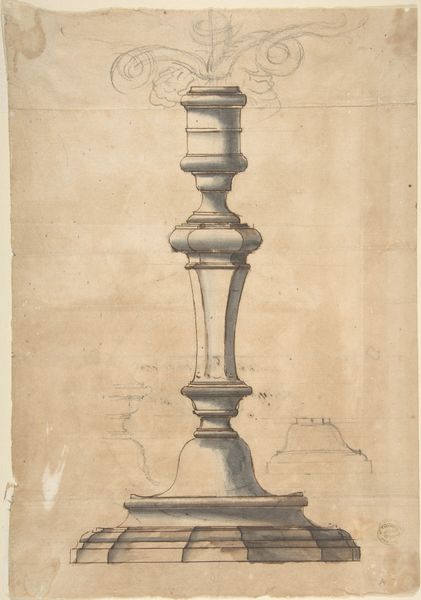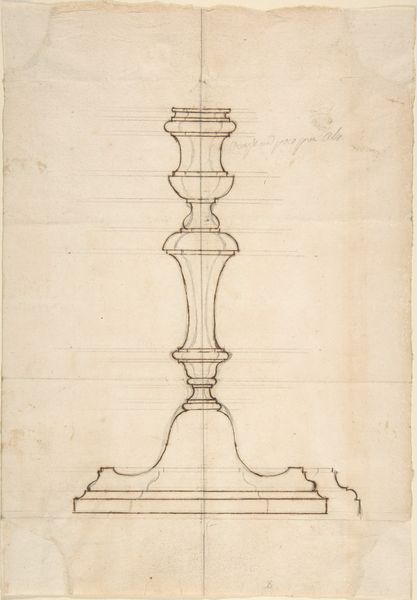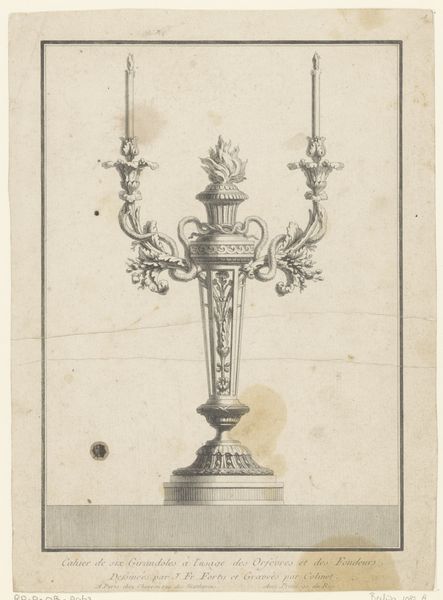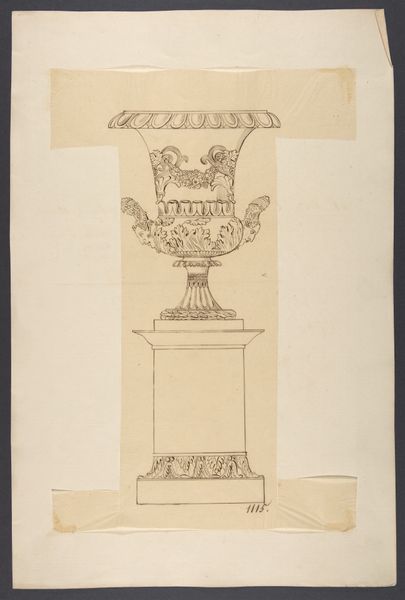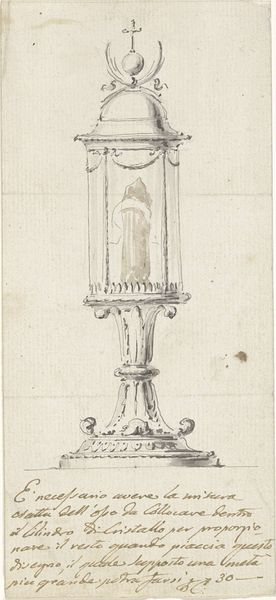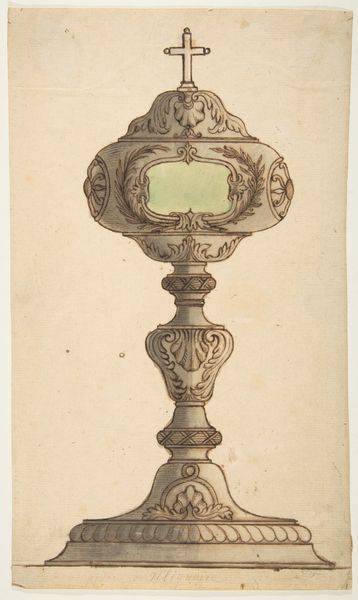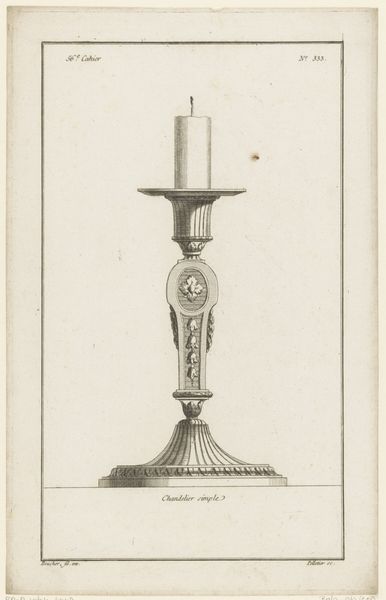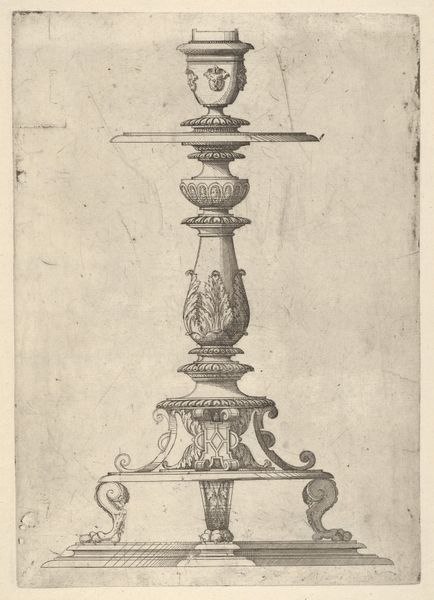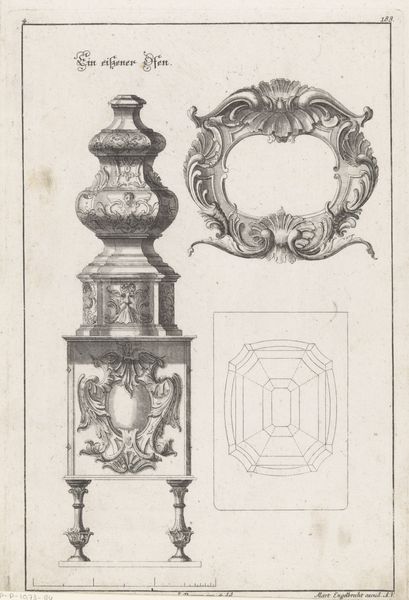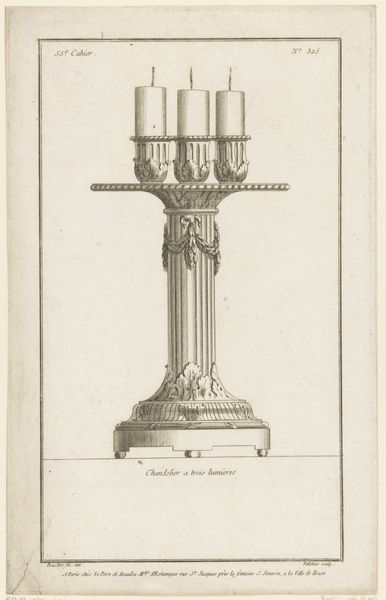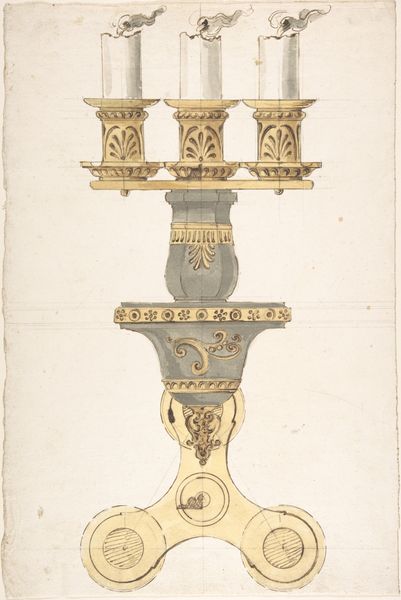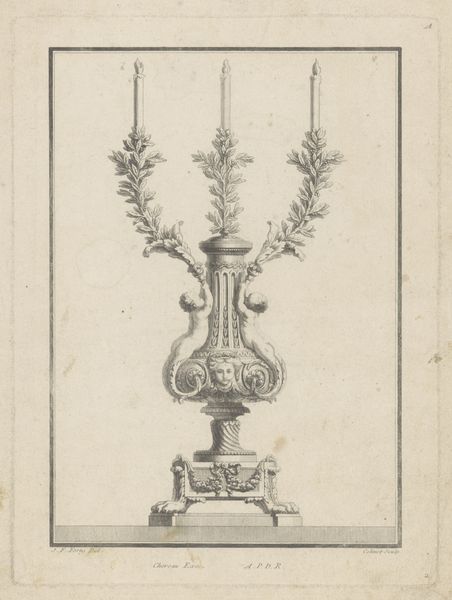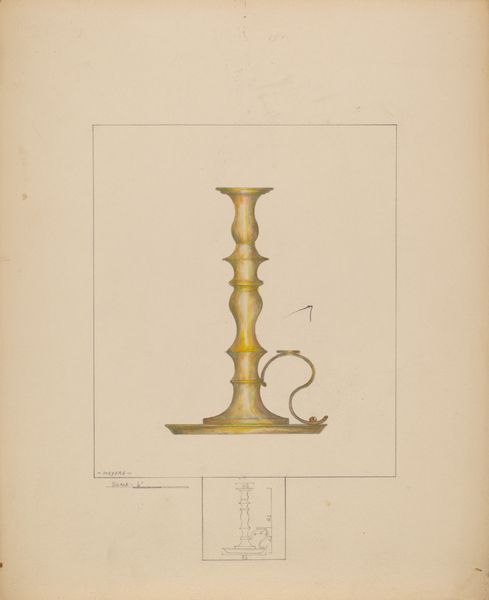
drawing, print, watercolor
#
drawing
#
neoclassicism
# print
#
furniture
#
watercolor
Dimensions: 8 3/8 x 6 5/8 in. (21.3 x 16.9 cm)
Copyright: Public Domain
Curator: Here we have a "Design for a Music Stand," an ink, watercolor, and graphite drawing originating from the 19th century, its creator unfortunately unknown. Editor: It's so delicate, almost ghostly in its rendering. The faded washes of color lend it an antique feel, like a forgotten dream of elegance. Curator: The neoclassical style is evident in its symmetry and the lyre motif. Think about the context of the 19th century, a period grappling with rapid industrialization and social upheaval. How does a piece like this fit in? Editor: It strikes me as a yearning for a romanticized past. The lyre, traditionally associated with music and poetry, seems to represent a longing for cultural refinement. Who was this design intended for? Wealthy patrons trying to maintain their status? Curator: Precisely. The meticulous detailing suggests a commission for a high-end product, an object intended to project an image of cultured sophistication. Note how the design incorporates classical elements—a deliberate reference to a perceived golden age. Editor: The architectural precision speaks to an effort of elevating the domestic space, creating a zone for aesthetic contemplation amidst a society wrestling with burgeoning technology. Was it an attempt to demarcate class, almost like a statement? Curator: Certainly. Music, and the accoutrements associated with it, like this music stand, served as visible markers of social standing and educational attainment. Who could afford to have bespoke objects designed like this one? Editor: Considering that this remains just a drawing, it invokes curiosity—I wonder if this elegant object ever transcended the planning stage, or was it meant to stay as just a representation of aspirational grandeur? Curator: Good point. It allows us to speculate on the artistic process. A tantalizing glimpse into what might have been, revealing how concepts of taste and class are visually constructed through art. Editor: Ultimately, this design embodies its historical tensions. Now I see a reflection of power and status through an object meant for artistic performance. Curator: Indeed, a small yet captivating window into 19th-century aspirations and the social functions of art.
Comments
No comments
Be the first to comment and join the conversation on the ultimate creative platform.
